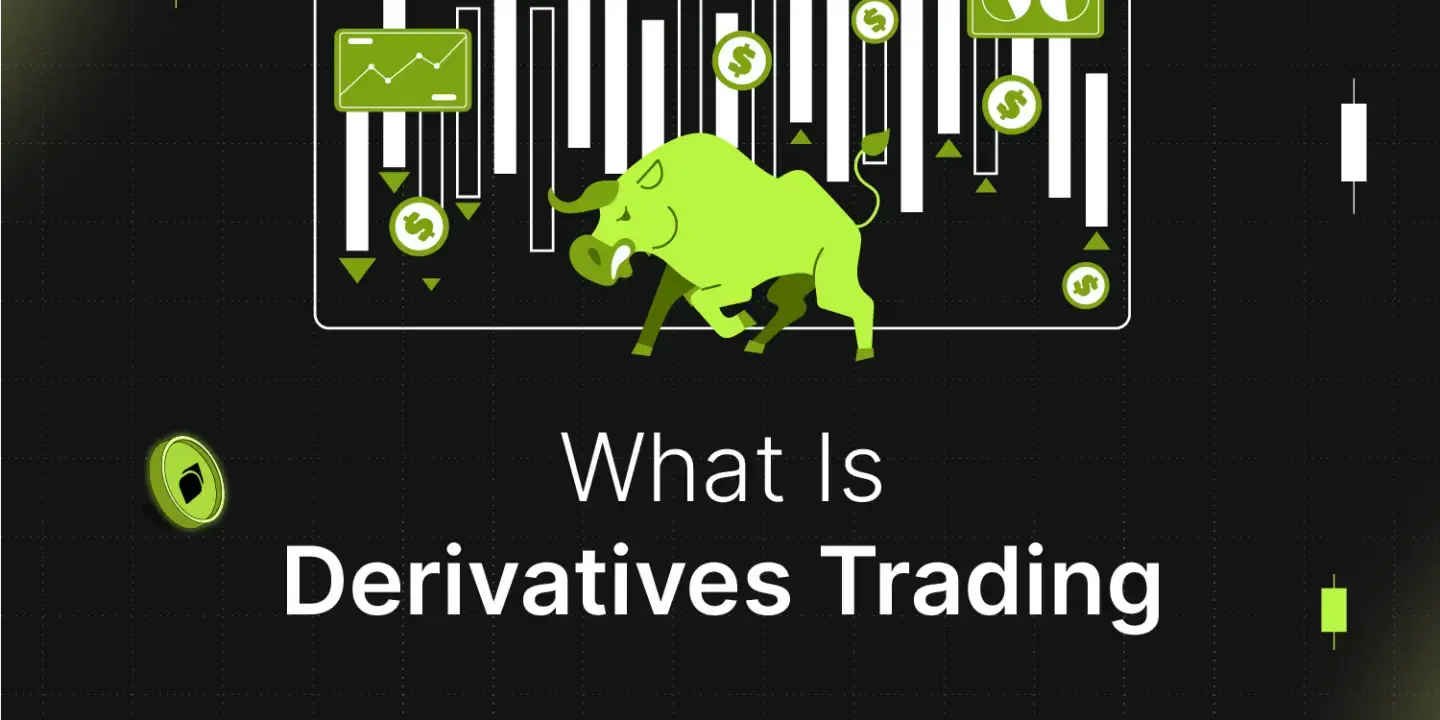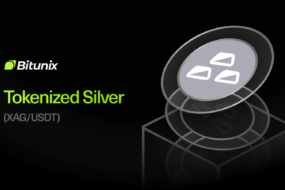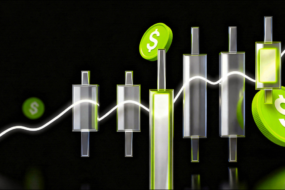

Meaning of Derivatives Trading
A contract in which one or more parties agree on a derivative value that is dependent on an underlying asset is known as a derivative contract. The bulk financial instruments that are mostly used in derivatives are equities, currencies, and commodities. The changes in the value of the underlying asset determine the derivative’s price. Derivatives may be exchanged through decentralized dealer networks as opposed to centralised exchanges, or over-the-counter (OTC).
It’s pertinent to understand the benefits and drawbacks of derivative trading for us to comprehend it completely. By purchasing or selling derivative contracts, traders can speculate on how an item’s price will move in the future and potentially make more money than they would if they had purchased the underlying asset immediately. This is known as derivative trading.
Derivative is like foreseeing the performance of an asset and making decisions on either to long (buy) or short (sell) it. But with certain risk management and technical tools like the Relative Strength Index (RSI), Moving Average Convergent Divergent (MACD), etc. A trader can make much better speculation on an asset.
However, options like leverage also help in amplifying a trader’s gains over a winning trade. Exchange like Bitunix and Binance offer about 125x leverage on derivatives trading on digital assets like Bitcoin (BTC), Litecoin (LTC), Ripple (XRP), Ethereum (ETH), Bitcoin Cash (BCH), Etc.
Since the 1980s, derivative trading has grown in reputation, and investors can now trade derivatives on various financial markets including stocks, currencies, and commodities.
However, due to the intricacy of derivatives, it makes it difficult for newbies to trade derivative.
Read further as we break down the main points associated with derivative trading.
Because derivatives only exist because of primary assets like stocks, bonds, and commodities, they are frequently referred to as secondary securities. Derivatives can also be used by traders to hedge against an existing position and reduce risk. Traders can go short and profit from declining asset values by using derivatives. As a result, they can protect themselves from any current long holdings by using derivatives.
Uses of Derivatives
Derivatives can be used for many purposes, but their most common uses are speculation and hedging. Speculation refers to the practice of buying and selling derivatives to profit from price movements in the underlying asset. Traders who engage in speculation are often looking for short-term gains those types of traders are mostly scalpers or swing traders and may use leverage to amplify their returns or gains.
The process of utilizing derivatives to lower or manage risk is known as hedging. Derivatives can be used by investors and businesses as a hedge against any losses brought on by unfavorable changes in the price of an underlying asset. Derivatives can be used, for instance, by an oil production business to protect itself against a drop in oil prices, or by an investor with a stock portfolio to protect themselves from a downturn in the stock market as a whole.

Characteristics of Derivatives
Looking to start derivative trading? Below are the similarities of derivatives and they all have different features and characteristics as well:
- They derive their value (and risk) from the price movement of an underlying asset or group of assets.
- They are agreements (contracts) between two or more parties.
- They expire or settle on a predetermined date and time.
Key components of derivatives trading include:
Underlying Asset: The financial asset from which the derivative derives its value. This can include equities, bonds, commodities, interest rates, currencies, or market indices.
Contract: The legal agreement between the parties involved in the trade, specifying the terms and conditions of the derivative.
Price: Determined by the price of the underlying asset, along with other factors such as market volatility, interest rates, and the time remaining until the contract’s expiration.
Leverage: Leverage in futures trading allows you to control a large position with a relatively small amount of money. Let’s say borrowing an asset to add to your underlying asset to trade a derivative contract, if the trade is moving to your favour the profits accrued to that amount will be calculated based on your leverage and added to your derivative account.
Remember, the higher the leverage, the higher the profits, and also the higher the loss that will be accrued to your margin size. Bitunix is among few exchanges that offer about 125x leverage on all derivatives perpetual futures contract
Types of Derivatives
Derivatives come in various forms, each serving different purposes and catering to different market participants. The main types include:
Futures: Futures trading is the trading of financial instruments as contracts via a futures exchange. It is an agreement between parties that an asset will be exchanged at a predetermined price and date in the future. One party is obligated to purchase the asset once the futures contract expires whilst, when expired, the other party is obliged to produce the asset. Trading futures is not as easy as it seems due to price volatility, market behavior or sentiment and lack of technical know-how.
Think of it this way, if an investor speculates that Bitcoin price will rise over the next six months, they might buy a futures contract that obligates them to purchase X number of Bitcoin at today’s price six months from now. If the price of Bitcoin does go up, they can either sell the contract or wait until the contract’s expiration and take possession of the Bitcoin at the now-discounted price.
Options: An option is a contract between two parties that grants the buyer the right, but not the duty, to buy or sell an asset at a certain price on or before a specified date. Options can be traded on a variety of underlying instruments, including stocks, ETFs, and indexes. Forex options function similarly, but are limited to currency pairings and are influenced by factors such as interest rates, inflation expectations, and geopolitics. Hedging and speculative objectives. Investors may use options to hedge against prospective portfolio losses or to speculate on the future direction of an asset’s price while limiting their risk exposure.
Swaps: Swaps are customized contracts where two parties agree to exchange cash flows or financial instruments over a specified period and time. Common types of swaps include interest rate swaps, where parties exchange fixed interest rate payments for floating-rate payments, and currency swaps, where parties exchange cash flows in different currencies. Swaps are primarily traded over-the-counter (OTC) and are used to manage interest rate risk, currency risk, and other financial risks.
One payment or cash flow is typically fixed, while the other varies depending on some factor—examples include interest rates, currency exchange rates, stock index values, and commodity prices. Fixed-vs-variable interest rate swaps and currency swaps are among the most popular types of swap contracts.
Forwards: Forwards contract derivative is identical to futures trading, forwards are customized contracts between two parties to buy or sell an underlying asset at a specified future date and price. Unlike futures, forwards are traded Over-the-counter (OTC) and can be tailored to meet the specific needs of the parties involved. Forwards are often used in foreign exchange markets to hedge against currency fluctuations. The forward contract’s value is based on the stability of the underlying asset and it includes the agreement of the asset price and trade date. Forward trading is an alternative to purchasing an asset at a spot price.
An example of forward trading is the Peer-to-Peer (P2P) trading that most exchanges like Binance offer. Users can hedge their digital assets over an asset like USDT and take advantage of the price volatility of their underlying asset.
Benefits and risks of forward trading
An advantage of forward contracts is that the agreement to buy and sell at a specific price in the future ensures that your position is protected from unfavourable market behaviour. However, this can also act as a disadvantage because the price can fluctuate in a favourable manner and the asset can become more valuable. As you are locked in at a specified price, you will not be able to take advantage from this movement in price.
Derivative trading strategies
With derivative trading, having a trading strategy is vital in deciding your entry and exit points. It is important to fix a plan that is built to achieve gains, limit losses and manage risk as much as possible.
Short-term traders such as day traders focus on following trends that arise throughout the day in short periods with the aim to gain from short-term price movements. There are several well-known strategies for short-term traders, such as scalping or swing trading, which is where traders aim to make a profit from small price fluctuations, before and after executing a trade.
Long-term trading involves holding on to a position for longer periods. Long-term traders make decisions based on fundamental analysis that mainly focuses on how the market will look in the future. Position trading is a popular long-term strategy, which enables traders to hold a position for a long period of time. Without concerning themselves with shorter-term trend movements, position traders’ focus is on the long-term objective which sometimes undeniably yield greater profits.
Advantages of Derivatives Trading
Derivatives trading offers a range of advantages which we stated below:
Hedging Risks: One of the primary uses of derivatives is risk management. By using derivatives, market participants can hedge against various risks, such as price volatility, interest rate changes, and currency fluctuations. For example, a farmer can use futures contracts to lock in a selling price for their crops, reducing the risk of adverse price movements.
Leverage: Derivatives allow traders to control large positions with a relatively small amount of capital. This leverage can amplify potential profits, making derivatives an attractive option for speculative trading. However, it is essential to note that leverage also increases the potential for losses, making it crucial for traders to manage their risk carefully.
Liquidity: Many derivatives, especially those traded on exchanges, offer high liquidity. This means that traders can easily enter and exit positions, facilitating quick responses to market changes and opportunities. High liquidity also ensures that prices remain fair and reflective of the underlying asset’s value.
Price Discovery: Derivatives markets play a vital role in price discovery, helping to determine the fair value of underlying assets. The trading activity and price movements in derivatives markets provide valuable information about market expectations and sentiment, which can influence the prices of the underlying assets.
Diversification: Derivatives aids investors to diversify their portfolios by accessing different asset classes and markets. This diversification can enhance returns and reduce overall portfolio risk. For instance, an investor can use commodity futures to gain exposure to commodities, thereby diversifying away from traditional equity and bond investments.
Derivatives help traders to some certain extent to mitigate the risk involved in trading by giving them the option of diversification.
Speculation: Derivatives offer opportunities for speculation, allowing traders to profit from price movements without owning the underlying assets. Speculators play a crucial role in providing liquidity to the markets and can benefit from both rising and falling markets. For example, a trader might use options to speculate on a stock’s price movement, potentially earning significant profits with a relatively small initial investment.
Disadvantages of Derivatives Trading
After knowing what derivative trading is, it’s imperative to be familiarised with its disadvantages as well.
High risk – Derivative contracts are highly volatile as the value of underlying assets like shares keeps fluctuating rapidly. Therefore, traders are exposed to the risk of incurring huge losses on their investments.
Counterparty risk – Derivative contracts like futures that are traded on the exchanges like BSE and NSE are organised and regulated. But, Over-the-Counter (OTC) derivative contracts like forwards, are not standardized. Hence, there’s always a risk of counterparty default.
Speculative in nature – Derivative contracts are commonly used as tools for speculation. Due to the high risk associated with them and their unpredictable fluctuations in value, baseless speculations often lead to huge losses.
Margin Calls- Margin calls are a common feature of derivatives trading. If a trader’s losses exceed their account size, they may be required to deposit additional funds to maintain their position if not they stand a chance to get liquidated. This can be a costly and risky proposition, as it leaves the trader vulnerable to further losses if the market moves against them.
Conclusion
Derivatives trading is an advanced and necessary component of financial markets, providing a variety of instruments for hedging, leveraging investments, maintaining liquidity, aiding price discovery, diversifying portfolios, and speculating on price changes.
Understanding the various types of derivatives and their benefits allows traders and investors to make informed decisions and efficiently manage their financial risks. As with any trading technique, it is critical to approach derivatives with a thorough grasp of the risks involved and to include them into a well-thought-out investing plan.
Derivatives have grown in popularity because they are based on the monetary value of an item rather than the physical asset itself, allowing businesses and people to trade stocks, currencies, and commodities without having to purchase them. This enables derivatives trade to focus on and be paid in cash, without requiring the physical item to be delivered.
Derivatives markets also allow traders to use leverage, which allows them to take a much larger position than the amount of capital required, increasing both possible gains and losses.
For businesses, derivatives play a crucial role in the financial and Fintech system by acting as a form of insurance through the hedging process, allowing them to avoid negative price movements and mitigate losses, regardless of which way prices move regarding their assets invested.












